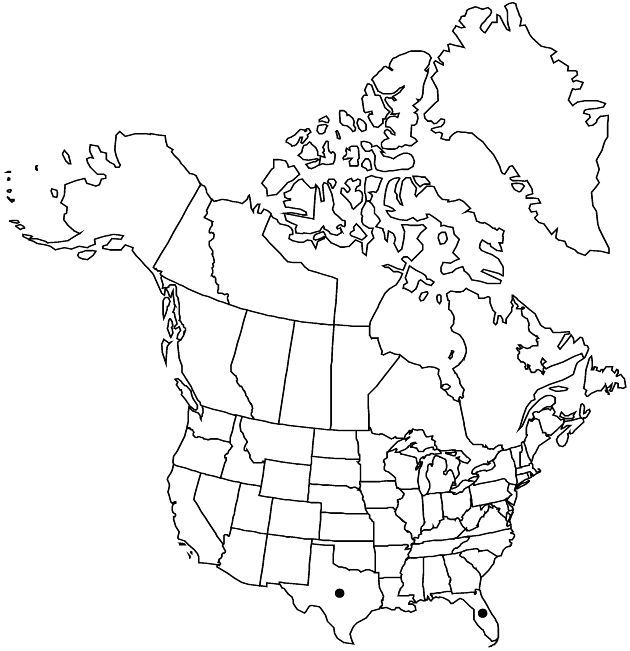Chromolaena odorata
Phytologia 20: 204. 1970.
Common names: Crucita
Basionym: Eupatorium odoratum Linnaeus Syst. Nat. ed. 10, 2: 1205. 1759
Synonyms: Osmia odorata (Linnaeus) Schultz-Bipontinus
Revision as of 21:56, 27 May 2020 by imported>Volume Importer
Perennials or subshrubs, mostly 80–250 cm. Stems erect or sprawling to subscandent, hispidulous to coarsely short-pilose. Petioles 5–20 mm. Leaf blades (3-nerved) narrowly lanceolate to deltate-lanceolate or ovate-lanceolate, 3–10 × 1–4 cm, margins coarsely dentate to subentire. Heads usually 5–50+ in (terminal or lateral) corymbiform arrays. Involucres cylindric, (7–)8–10 mm. Phyllaries in 4–6(–8) series, apices of the inner appressed, rounded to truncate (sometimes slightly white-petaloid or expanded). Corollas purplish to light blue to nearly white or slightly pinkish. 2n = 40, 60, 70.
Phenology: Flowering mostly Oct–Dec, sometimes year round.
Habitat: Hammocks, thickets, pinelands, cypress-slash pine flats, canal banks, disturbed sites
Elevation: 0–30 m
Distribution

Fla., Tex., Mexico, West Indies.
Discussion
Selected References
None.
Lower Taxa
None.